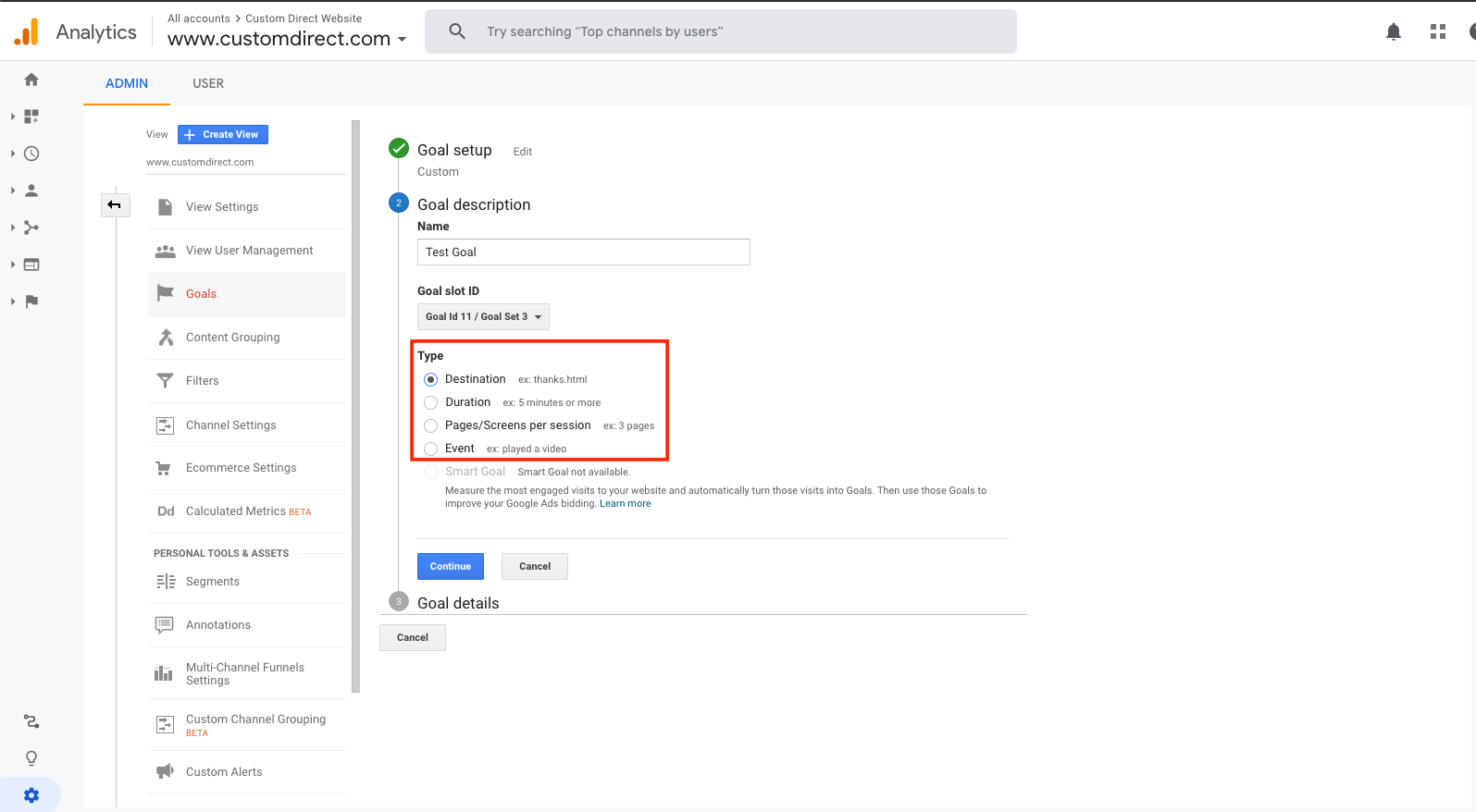
Why Hosting a Webinar Could Be Your Next Marketing Move
June 16, 2020
Your Reference Guide for Google Ads
July 29, 2020Why Your Website Needs Google Analytics Goals


Google Analytics provide incredibly useful information, like the number of visitors, activity, and time spent on a website. However, setting up Goals in Google Analytics can maximize the effectiveness of data as it allows websites to measure specific objectives.
In other words, by setting up Goals, you can track valuable visitor actions, or Conversions, which tell you more about your customers, your sales process, and how well your website is supporting your business. Prime examples of these Conversions are completed forms, important links clicked, or key pages visited.
Starting at a high level, Goals fall into one of four basic objectives:
Destination - This type of Goal is triggered when a user lands on a specific page on your site which you’ve identified as important. For many businesses, this might be a promotional page to track visitor interest, or a “thank you” page which loads after submitting a form. These Conversions aid businesses in lead nurturing and hot sales opportunities, as well as identifying popular site content.
Duration - A Duration Goal, based on the length of a user session, is also an indicator of visitor interest. These Conversions are triggered when a user remains on your site past a set amount of time. Understanding this type of Goal assists in identifying the truly meaningful, intentful visitors to your site and further narrows your target audience.
Pages/Screen - A Goal falls into this category when a user exceeds a specified number of pages within a single session. Meaningful for companies of all types, Pages/Screen Goals can indicate the content which keeps visitors on your site, the pages which encourage users to reach a “Checkout” page, and more buyer’s journey information you might otherwise miss out on.
Event - The most broad of all the Goals, Event Goals are triggered when a user takes a specific action. You can connect user action to specific elements of your site which you find valuable. Common examples would be users clicking on a phone number, playing a video on your home page, or downloading key content. Though it might involve a bit more work on the set-up side, the payoff is significant, as Event Goals are an excellent way to tie website data with marketing and sales tactics.
Digging in a little deeper, Goals within each of these objectives are very specific, both in content, and the website page where they exist. The further you target specific website content, the closer you get to your corporate objectives and overall strategy.
Setting Goals within Google Analytics can help you capitalize on the data you collect from your website and make it more meaningful for your specific business. Reviewing this enhanced data provides a better understanding of content performance, the steps in your sales funnel which could be improved, and potential new sales opportunities.
Not sure if you have Goals or where to check? Here are four steps to find out:
We are happy to review your analytics needs and set up your Google Analytics Goals -- reach out to us and learn more about your website performance!






